Papers by Stéphane Gallégo
Cochlear Implants International, 2010
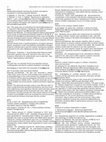
International Journal of Pediatric Otorhinolaryngology, 2011
Aim: This study aims at evaluating the functional consequences of long-term high-frequency deafne... more Aim: This study aims at evaluating the functional consequences of long-term high-frequency deafness, on the ability to process low-frequency speech sounds, in partially deaf patients. Material and Methods: 22 hearing-impaired subjects participated to this study, all had hearing thresholds superior to 90 dB HL at 1000 Hz and above. Stimuli, administered at the most comfortable intensity level, were speech signals unfiltered or low-pass filtered at various cut-off frequencies, every 1 / 2 -octave between 250 and 2000 Hz. Results: Results show a significant positive correlation between speech recognition scores and deafness duration. The strongest predictor of performance was the relative hearing-loss duration, expressed as the ratio of deafness duration divided by patient's age. Conclusions: Following a long-standing high-frequency deafferentation, patients may have learned to only rely on lowfrequency information to understand, in such a way that they "ignore" high-frequency information.
De nombreux patients sont atteints d'une perte auditive dite "partielle" de type pente de ski qui... more De nombreux patients sont atteints d'une perte auditive dite "partielle" de type pente de ski qui se caractérise par une perte légère à moyenne dans les fréquences graves associée à une perte auditive profonde voire totale dans les fréquences aiguës.

The Laryngoscope, 2002
The purpose of the study was to test for differences in late electrically evoked auditory potenti... more The purpose of the study was to test for differences in late electrically evoked auditory potentials between subjects exhibiting "good" versus "poor" speech recognition performances with their cochlear implants. Late auditory evoked responses were measured in 30 subjects equipped with the Digisonic (MXM, Antibes, France) cochlear implant, 15 of whom had "good" speech recognition scores (i.e., more than 89% correct phoneme identification without lip reading). The 15 other subjects had poorer speech recognition scores (i.e., less than 85%). Differences in N1P2 amplitude, as well as P1, N1, and P2 latencies, and N1-P1 and N1-P2 latency intervals were tested. Wave P2 latency was found to be significantly different between the two groups (P =.016), being shorter in "good" than in "poor" performers. The strength of the statistical relationship between electrophysiological and speech recognition variables (r2 = 17%) was substantially smalle...
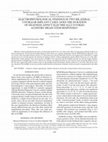
The Annals of otology, rhinology, and laryngology, 2002
Bilateral cochlear implantation provides an interesting model for in vivo study of the effect of ... more Bilateral cochlear implantation provides an interesting model for in vivo study of the effect of long-term profound deafness on neural transmission. We present electrophysiological observations on 2 patients implanted with the MXM Binaural Digisonic Convex system. This uncommon design consists of 2 electrode arrays placed bilaterally into the scala tympani and controlled by a single speech processor. In both patients, the duration of deafness before cochlear implantation clearly differed from one ear to the other. Electrically evoked auditory brain stem responses (EABRs) were measured and the EABRs from the ear with the longer deafness duration showed a lengthening of wave V latency. In I patient, recordings from this ear also showed a lack of reproducibility of wave III. The data suggest that neural responsiveness in the peripheral and intermediate auditory pathways is adversely affected by deafness duration. Poor EABRs on one ear possibly result from the total duration of deafness...
Electroencephalography and Clinical Neurophysiology/Evoked Potentials Section, 1998
Sciences et Technologies pour le Handicap, 2008
ABSTRACT
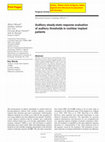
International Journal of Audiology
The aims of this work were to characterize the electrophysiologic response obtained by measuremen... more The aims of this work were to characterize the electrophysiologic response obtained by measurement of the auditory steady-state response (ASSR) in patients with a cochlear implant (MXM Digisonic) and to study the relationship between the subjective thresholds of the implantees and those estimated using electrical auditory steady-state response (ASSR)-based objective audiometry. Five subjects were examined with the use of four carrier frequencies-600, 1000, 2000 and 3500 Hz-modulated at frequencies between 70 and 85 Hz, a particular frequency of modulation being represented at a specific electrode (for each carrier frequency) as a particular pulse-width modulation frequency. The protocol consisted of testing output and thresholds for different overall pulse durations for several stimulus (pulse) intensities, rendering multiple threshold measures (in duration) for each subject tested. The non-linearity of response growth, as a function of duration, provided the basis for teasing apart physiologic response and electrical artefact in the suprathreshold recorded responses. Thresholds estimated with use of the electrical ASSR demonstrated reasonably good agreement with the subjective thresholds. The results obtained thus demonstrated the efficacy of the approach and are encouraging for further advances in cochlear implant applications.
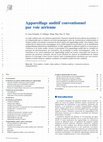
EMC - Oto-rhino-laryngologie
Les aides auditives par voie aérienne représentent l'immense majorité des prescriptions des proth... more Les aides auditives par voie aérienne représentent l'immense majorité des prescriptions des prothèses. Il est indispensable que les médecins oto-rhino-laryngologistes aient des connaissances fondamentales et cliniques solides et actualisées concernant les divers aspects de l'appareillage auditif. Tout d'abord, il faut comprendre les répercussions neurologiques de la surdité (plasticité de privation) et de la réhabilitation audioprothétique (plasticité de réhabilitation). En effet, appareiller un déficient auditif ne se résume pas à s'intéresser à ses seules oreilles. Ensuite, le prescripteur d'un appareillage auditif doit en connaître les principes de fonctionnement, les contraintes, les possibilités et limites technologiques. Enfin, les indications et les contre-indications de l'appareillage auditif ont évolué, nécessitant une remise en question des anciennes certitudes, afin de ne pas diminuer les chances de réhabilitation de chaque patient et d'envisager à bon escient d'autres types d'audioprothèses (prothèses par voie osseuse, implants d'oreille moyenne, implants cochléaires ou implants auditifs du tronc cérébral).

T ous ceux qui, de près ou de loin, s'intéressent au « monde des acouphènes » sentent bien qu... more T ous ceux qui, de près ou de loin, s'intéressent au « monde des acouphènes » sentent bien que nous vivons un moment clef de leur histoire. Le monde scientifique ne leur a jamais consacré autant de travaux dont les résultats s'expriment par une multitude de publications, congrès, enseignements…. Et pourtant, à l'autre bout de la chaîne, face à son patient, le praticien reste, dans l'immense majorité des cas, encore bien démuni de toute arme thérapeutique réellement efficace. Mais, on perçoit que les formidables avancées physiopathogé-niques et technologiques vont prochainement pallier le fossé qui sépare encore physiologie et thérapeutique ; le dossier qui suit y apporte sa contribution. Qu'en est-il en effet des acouphènes en pratique clinique ? Avant tout, l'attention du praticien ORL doit redoubler devant tout acouphène unilatéral, d'autant plus qu'il est pulsatile et plus encore s'il est objectif. Mais, dans l'immense majorité des cas, tou...
Advances in Modelling and Analysis B

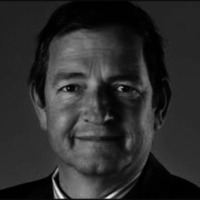
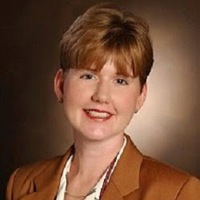
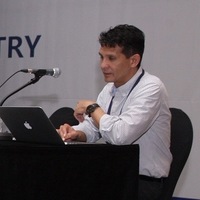
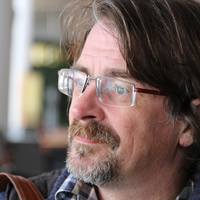

Uploads
Papers by Stéphane Gallégo